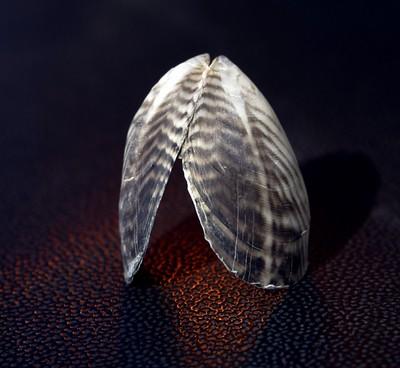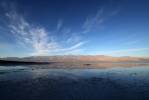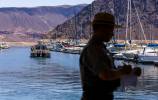Experts disagree on Lake Mead’s quagga-mire
The quagga mussel invasion probably will result in Lake Mead becoming clearer and evaporating at a faster rate, according to a Canadian researcher.
Basing his predictions on what happened in the Great Lakes region after zebra mussels turned up there, Ronald Griffiths of Aquatic Ecostudies Ltd. in Dutton, Ontario, said Lake Mead's ecosystem will change forever because of the spread of the non-native mussels.
Lake Mead and other lakes on the lower Colorado River system where quaggas have been found this year stand to become more clear than they currently are because the fingernail-size mussels filter water to consume food such as tiny, green plankton and brown organic matter, Griffiths said.
The mussels do create a mucus, but that sinks to the bottom of the lake, Griffiths said.
This will attract worms and bugs such as midges, or chironomids, that will live among the mussels and feed on their excrement, he said.
"As the water ... clears up -- this does not mean cleans up -- the lake will absorb more heat and evaporate more water," Griffiths wrote in an e-mail to the Review-Journal following a presentation he made this summer to fisheries biologists at Lake Mead.
That's a potential problem for the population of the Las Vegas Valley because about 90 percent of its drinking water comes from Lake Mead.
Peggy Roefer, regional water quality manager for the Southern Nevada Water Authority, disagrees with Griffiths.
Unlike many lakes and rivers in the Great Lakes region that invasive mussels have populated, the deep expanse of Lake Mead is already very clear and the impact on evaporation probably will be minimal, Roefer said.
"In the open water of Lake Mead, I would think that the presence of quagga mussels will have little effect on clarity or water temperature," she wrote an e-mail Thursday.
"However, the shallower, more turbid areas around the inflows into Lake Mead from Las Vegas Wash and the Virgin and Muddy rivers could be affected," Roefer said.
Discovery of pesky quagga mussels Jan. 6 in Lake Mead's Boulder Basin and later at each end of Lake Mohave and downstream in Lake Havasu stirred concern among wildlife and water-delivery officials who feared the infestation will spread throughout the West, wreaking havoc as they clog pipes and ruin marine equipment.
Zebra mussels and their quagga cousins infested the Great Lakes region more than a decade ago after they were transported in ballast water from ships from the Ukraine and eastern Europe. Biologists believe quaggas hitchhiked on a boat that was launched in Lake Mead.
Griffiths predicts the plume of nutrients rich in phosphorus and nitrate entering the lake from Las Vegas Wash downstream of the valley's wastewater treatment plants, will be absorbed by plankton and then eaten by the mussels.
But this, he said, will favor abundance of a type of bacteria, cyanobacteria, not filtered by the mussels that can produce toxic by-products.
In 2000, federal scientists experimented with a floating wetlands system where Las Vegas Wash enters the lake.
There, they anchored platforms of reeds, bulrushes and cattails in a system of man-made islands in hopes that the roots of the plants dangling in the shallow water would glean nutrients, remnants of lawn fertilizers and some heavy metals from the in-flow.
Though the bulrushes and cattails removed some nutrients, the demonstration project ended in 2003 with inconclusive results.
Now with quagga mussels already in the lake, could they be used to filter dirty water entering the lake by raising colonies of them positioned below similar floating platforms?
Roefer points out that drinking water for the Las Vegas Valley is withdrawn from the depths of Lake Mead's Boulder Basin.
"Very few contaminants can be found in this portion of the lake," she said.
"From a drinking water perspective, it is difficult to believe that the quagga mussels could have any impact on the small quantity of contaminants found in Boulder Basin," Roefer said. "Also, I would be hesitant to suggest propagating any invasive species because there may be unintended consequences."
So, can quaggas be good for anything, such as food for people?
"No," wrote Griffiths. "We have never heard of anyone eating these critters. The implication from Europe is that they are too rubbery."
He said "a few people" have wondered if they would make good chicken feed.
He warned that another invasive mussel, the tropical zebra mussel "is currently racing through South America from a boat ride from southeast Asia."
This one, known as limnoperna, prefers warm waters with low calcium concentrations and could make company for its cousins, the quaggas of Lake Mead.




























